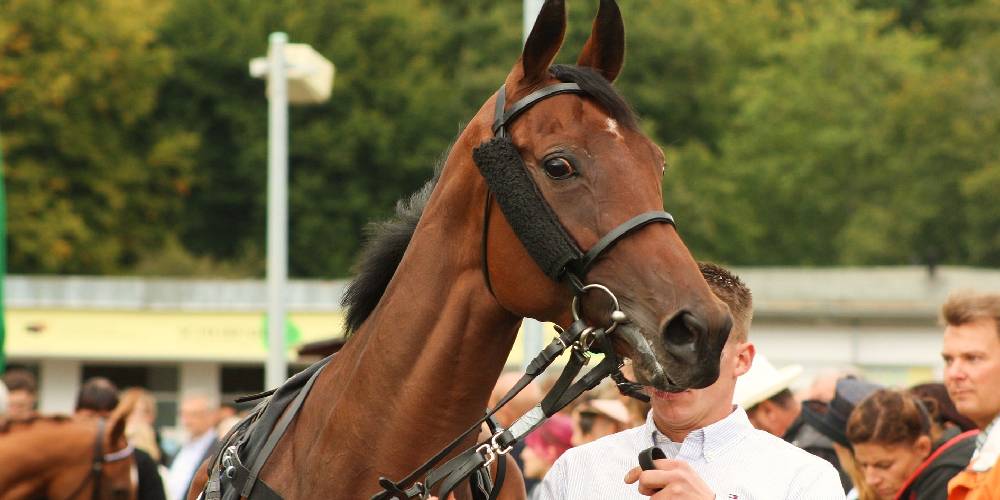For the longest time, I had no idea what an OTTB was. I even had friends who would talk about their OTTBs and I didn’t even know what they were. Finally, I asked them what an OTTB was and what OTTB stood for. As it turns out, OTTBs are Thoroughbreds retired from their previous racing careers. Now knowing what they were, I began to dig a little deeper into what these horses are, what happens to them after their racing days are over, and if you can buy them.
What Does OTTB Stand For?
OTTB stands for the words Off-Track Thoroughbred. A horse labeled as an OTTB is a horse that was bred and trained to be raced, and is now retired from its racing career.
Do OTTBs Need To Be Thoroughbreds?
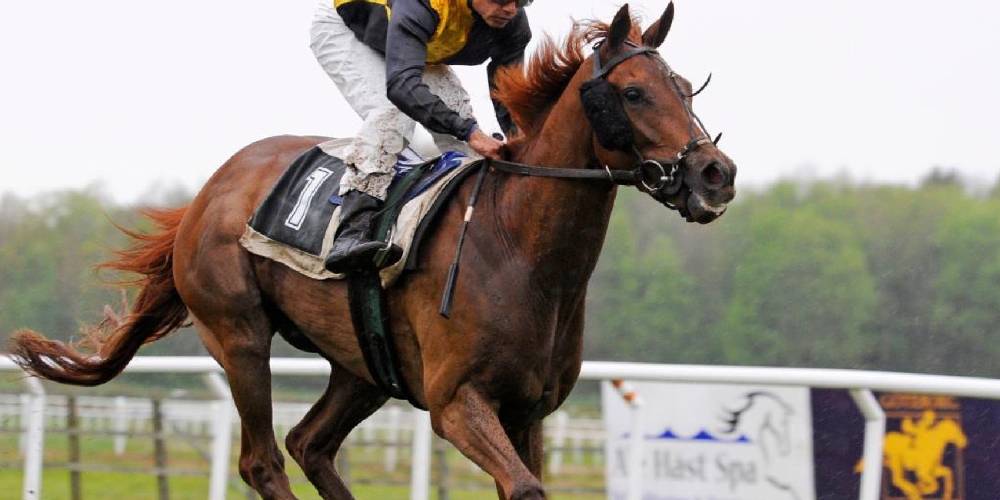
In order to be considered a true OTTB, a horse must meet a few requirements:
It Must Be A Thoroughbred
There are many different breeds of horses that are used in horse racing outside that of the Thoroughbred breed. In order for a horse to be considered a OTTB, it must be a Thoroughbred. This might seem obvious as OTTB means Off-Track Thoroughbred, but you would be surprised at how many people consider any off-track racehorse an OTTB.
The Horse Has To Have Raced Before
Even if a horse was bred and intended to be used for racing, a horse can not be considered an off-the-track horse if they have never been raced. This goes for one of my friends horses. Her horse is a big chestnut Thoroughbred who was intended to be used for racing, but never made it to the track making it just a Thoroughbred rather than an OTTB.
How Old Are Racehorses When They Retire?
The age a horse retires from its racing career depends on a number of things. Some of these include:
- Success As A Racehorse
- Injuries
- Speed
- Whether The Horse Is A Bleeder Or Not (I will explain below)
- Conformation
- Temperament
- Competitiveness
Most racehorses retire from their racing careers around the age of 6 though some are retired sooner or later depending on the previously mentioned factors.
Why Are OTTBs Retired From Their Racing Careers?
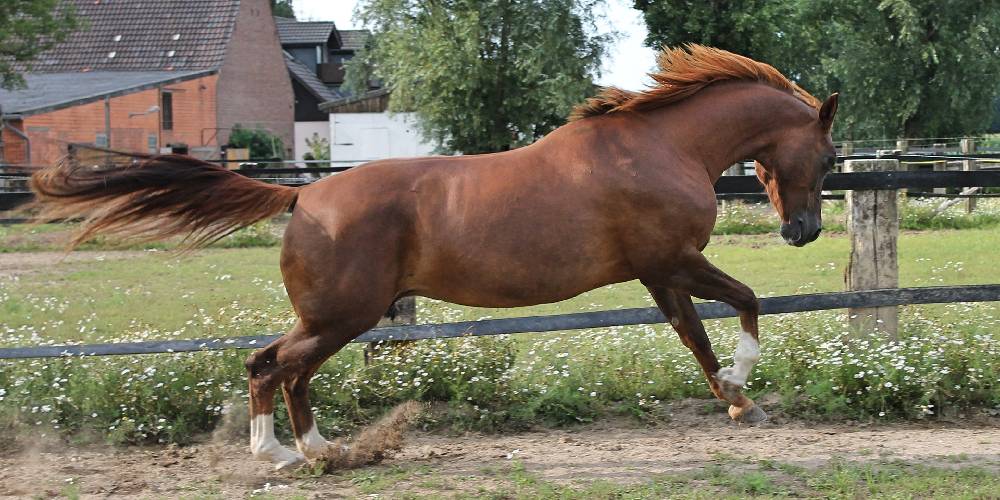
Like I mentioned above, there are a number of factors that play into the success and duration of their racing careers. There are multiple reasons why a Thoroughbred racehorse might stop racing. Some of these include:
The Horse Isn’t Successful
Some horses, like my friend’s OTTB, just don’t reach success on the track. Sometimes horses are just not meant to race and this goes for my friend’s horse who lost nearly every race he ran before she adopted him. Horses that don’t show potential immediately are often cast aside because it isn’t worth training a horse to win when the horse just doesn’t have it in him to win.
The Horse Suffers An Injury
Many racehorses are retired due to injuries. This was the case for the famous racehorses Barbaro and Ruffian who both suffered broken limbs. A few frequently seen injuries in racehorses include:
- Bowed tendons
- Torn ligaments
- Fractured bones
- Splints
Most, if not all of these injuries seen in racehorses are career ending injuries.
It Just Can’t Run Fast Enough
There is an immense need for speed in the horse racing industry and if a horse just can’t run fast enough, it will be retired from its racing career. I ride a horse named Harveson Harv (we call him Harvey) who was retired from his career as a racehorse mainly because he just didn’t have the speed in him necessary to win.
The Horse Is Labeled A Bleeder
Some racehorses, while they are galloping around the track, will suck hard on their cheeks, a bad habit that some just do not quit. This cheek-sucking habit done by many horses can cause the cheeks of the horse to be cut on their molars which causes bleeding. It does not look good to have a horse bleeding profusely out of its mouth at the end of a race. This is what causes a number of horses to be retired. Once a horse is labeled a bleeder, it is often not allowed to race at other tracks.
One of the OTTBs at the barn I work and ride at had this same issue. His name is Padre George and he is a big mouthy dark bay Thoroughbred. The cause for the end of his racing career is exactly this, he was labeled a bleeder. Because this horse is so mouthy by nature, I wonder if his mouthiness can be tied back into his history of cheek-sucking.
Poor Conformation
Horses that have a poor build often don’t make it as racehorses for a number of reasons. One example of how poor conformation can affect a horse is if a horse has too straight of a shoulder. This would make it so it won’t be able to extend its legs like its opponents can forcing the horse to take more steps to cover the same amount of ground.
The Horse Is Mellow In Temperament
Sometimes mellow horses just don’t make it very far in racing because they don’t seem to have the get-up-and-go required of racehorses. Mellow OTTBs go on to make excellent riding horses once their racing career is over, but on the track, they really don’t get too far because of their temperament.
The Horse Doesn’t Have The Drive Or Desire To Win
This is one of the biggest deal breakers when it comes to racehorses. A successful racehorse must have the drive necessary to push themselves as hard as possible to make it first over the finish line, and if they don’t, it is a lot harder for them to become a successful racehorse in the long run.
What Happens To OTTBs After Their Racing Days Are Over?
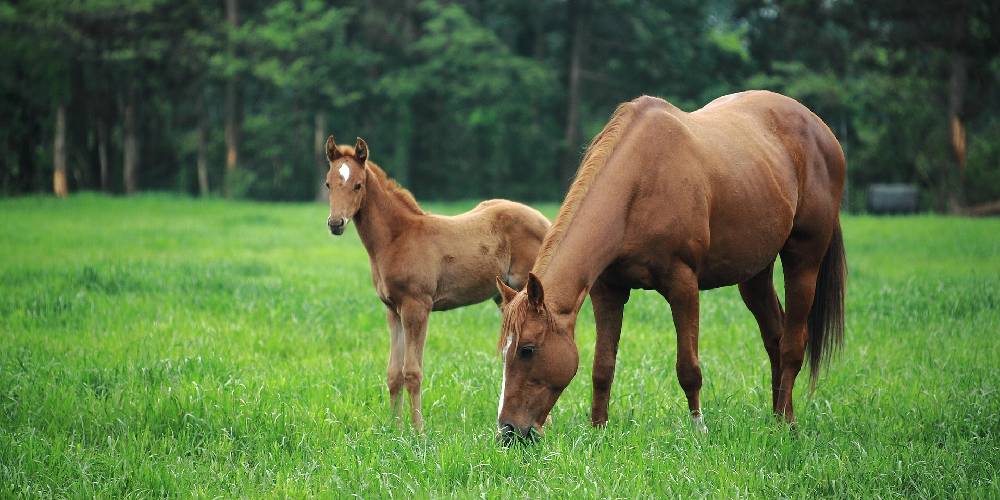
There are many things that OTTBs can do once they are off the track. Sadly, some also end up in not-so-good situations as well. The things/places that OTTBd do/go after they are done racing can include:
Retired To Pasture
Many racehorses, especially injured or unbreedable horses, will end up turned out to pasture for the rest of their days. This mainly happens with successful racehorses whose owners now want them to live out their days comfortably. Sometimes, ex-racehorses will retire this way even if they weren’t successful in their racing career because someone wanted to give them the retirement they deserve.
Standing At Stud
Successful racing stallions are often used to stand at stud and will reproduce with a number of mares. This is only done with top stallions as it is the premium bloodlines that people are after.
Showjumping
Often horses that have been retired from racing have a natural jumping ability that some people like to draw out of these horses. There are so many Thoroughbred show jumpers that were once racehorses. These horses make great show jumpers because of their natural jumping ability, their speed, and exceptional stamina. This is one of the most common places for these horses to end up.
Dressage
Thoroughbreds that have good coordination, strength, and obedience make excellent dressage horses. Because they do so well in this discipline, it is not uncommon for people to take OTTB horses and switch them from racing to dressage. Because of the absence of a career that many of these horses suffer after they are done racing, dressage is a great thing for these horses to enter into as it isn’t just another career for them to go into, but it also improves their strength and condition overall.
Barrel Racing
Many OTTBs are sold as barrel prospects for their natural born speed and agility. Because these horses are used to running as fast as they can, teaching them a pattern and incorporating this racing ability often turns unwanted OTTBs into high quality barrel racers.
Eventing
Using the natural jumping, speed, and stamina traits of these horses in three different disciplines will not only keep these horses in shape, but it will also give them a much needed job.
Cross Country
Cross country is much like racing though it involves obstacles and running through a variety of terrain. This is a great sport for OTTBs to be used for as it uses the skills they already know while adding a fun new twist to them. These horses often win these competitions because many of the Warmbloods they compete against are much slower and heavier than them making OTTBs have better times and scores.
Trail Riding
The more mellow and laid back OTTBs often are used simply as trail horses. This simple job makes the horse relax and enjoy their lower-level career rather than becoming stressed or anxious from the intensity of racing they knew in the past.
Lesson Horse
Harvey, the OTTB I ride at the barn I work at, is being used as a lesson horse. Because he is one of the mellow OTTBs that come off the track, he does great with beginners and responds really well. He doesn’t buck or rear and just does his job calmly and smoothly.
Pleasure Horse Or General Riding Horse
Most OTTBs, if they aren’t given an official career, are just used for general pleasure riding in both English and Western styles. These horses are great at whatever you train them to do so using them as a riding and companion animal is a great thing for these horses to retire to, especially if they are still fairly young.
Slaughter At Kill Pens
Sadly, many retired racehorses are given up to kill pens because they are unwanted. There are many retired racehorse adoption groups and rescue centers who will then rescue these horses, though many aren’t so lucky.
Can I Buy An OTTB?

Absolutely! If you are thinking of taking on a project horse, there are several OTTBs for sale all across North America as well as other continents all over the world. OTTBs, if not successful on the track, often sell for numbers as low as $700 to up to $30,000 depending on training, natural ability, age, temperament, and conformation.
Is It Hard To Train An OTTB?
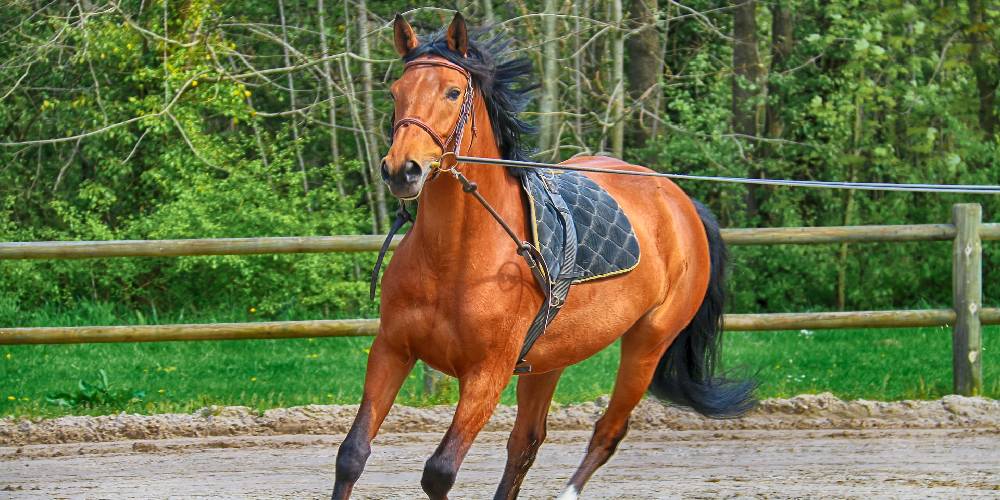
The ease of training these horses depends on the individual horse itself. Sometimes, these horses are extremely hard to train because they think they’re supposed to run as soon as someone mounts them. Other times, they are really easy to train because some are so mellow. The level of difficulty when it comes to training these horses really depends on the horse.
Are OTTBs Registered?
Yes, most OTTBs are registered with something known as the Jockey Club. The Jockey Club will usually even hold race records, birth information, and more.
Why Does My OTTB Have A Lip Tattoo?
Because successful racehorses are so desirable, having one stolen is not uncommon. The inside of many racehorse’s lips will be tattooed so they can be identified easily if they are stolen.
How Big Are OTTBs?
OTTBs are just Thoroughbreds so their height and weight is going to be the same as the Thoroughbred breed standards.
These horses can stand between 15.2 and 17 hands high on average and weight between 1,000 and 1,200 pounds.
What Colors Do OTTBs Come In?
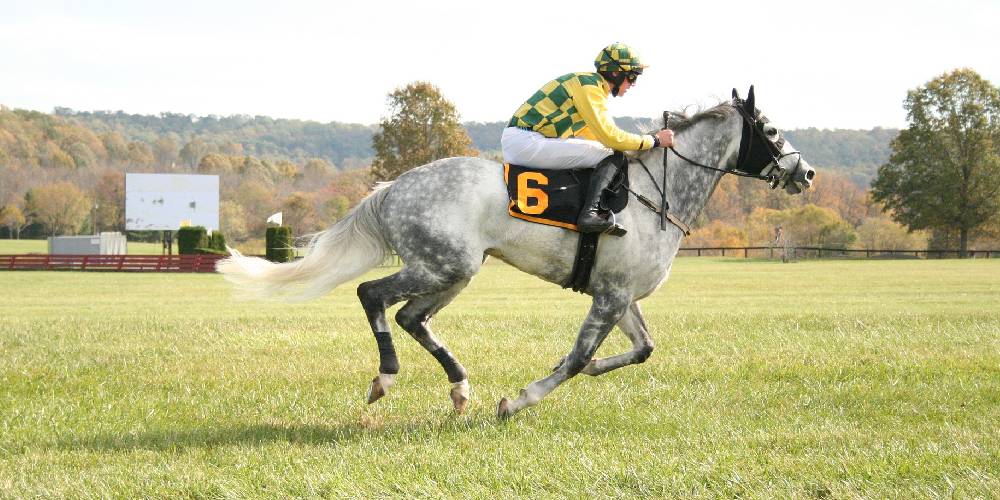
The Thoroughbred horse, or the OTTB, can come only in solid colors. The colors allowed in these horses include:
- Black
- Bay (can be light, dark, black, or blood bay)
- Gray (can be flea bitten, white, or dappled)
- Chestnut (can be flaxen, liver, light, or sorrel chestnut)
- Palomino

